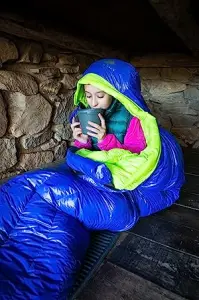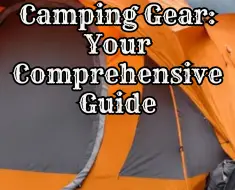
Navigating the world of outdoor gear can be an intimidating venture, especially when faced with equipment that serves a specific, critical function. Such as a zero-degree sleeping bag. These particular sleeping bags keep harsh, frigid temperatures in mind in their design. Further, they are a key piece of equipment for many outdoor adventurists. This guide will shed light on the complexity and importance of zero-degree sleeping bags. We will cover their notable features and the benefits they offer to their respective outdoor enthusiasts. Additionally, we’ll delve into the necessary and proper care these special bags require to ensure a long and dependable lifespan.
Just cold weather sleeping bag but nothing down to zero degrees? Check out these options.
Understanding Zero Degree Sleeping Bags
Understanding Zero Degree Sleeping Bags
A zero-degree sleeping bag, as the name suggests, is a type of sleeping bag that will keep you warm and comfortable in temperatures as low as zero degrees Fahrenheit. This temperature rating refers to the lowest temperature at which the sleeping bag will provide warmth. It’s important to note, however, that the rating does not guarantee comfort at zero degrees – only survival. The comfort level is typically at a higher temperature.
I cannot understate the significance of the temperature rating. When you’re camping or hiking in cold weather, staying warm isn’t just about comfort—it’s about safety. Exposure to freezing temperatures can lead to hypothermia or frostbite. Zero-degree rated sleeping bags, therefore, provide a safety barrier against the cold.
When and Where Are Zero-Degree Sleeping Bags Used?
Zero-degree sleeping bags are ideal for camping, hiking, mountaineering, and other outdoor activities that take place during the cold winter months. Especially winter activities in areas where temperatures can plummet to zero degrees or below. They’re also suitable for use at high altitudes, where even summer temperatures can be frigid.
However, these sleeping bags can be too warm and uncomfortable for mild temperatures. Therefore, understanding your destination’s temperature range before your trip is essential in helping you choose the right sleeping bag.
Design Features of Zero-Degree Sleeping Bags
To keep you warm, zero-degree sleeping bags generally come with several design features. Grid baffles, for instance, are a common feature that helps to maintain a steady distribution of insulation, preventing cold spots. They also often have a mummy-style design, which is more form-fitting to retain body heat, along with a hood to protect the head and face.
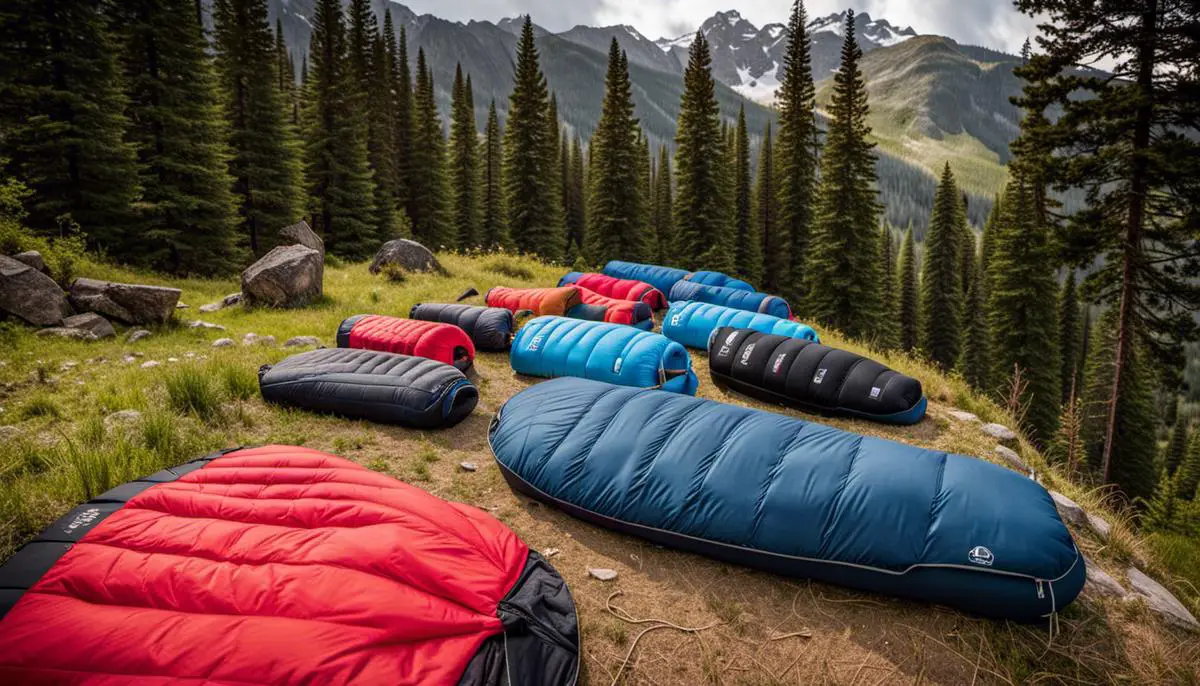
Whether the midnight chills have you shivering or you are an avid winter camper having the right sleeping bag is critical. The temperature rating is certainly a paramount consideration when selecting an appropriate sleeping bag, yet other elements such as the type of insulation, dimensions, and total weight are equally important. Moreover, to ensure your sleeping bag continues to perform optimally and endure throughout many adventures, it is imperative to store and maintain it properly.
Consider these sleeping mats as you are making your sleeping bag purchase.
Key Features of Zero-Degree Sleeping Bags
Understanding the Components of Zero-Degree Sleeping Bags
An initial element to scrutinize when selecting a zero-degree sleeping bag is the construction materials. Durability and high quality compose the cornerstones of the most effective sleeping bag materials. Particularly given the potential for exposure to severe outdoor conditions. Usually, the outer shell of such sleeping bags includes robust nylon or polyester. This provides a barrier against wind, wet weather, and snow. It is a superb construction. These materials come with the added advantage of water resistance, and many are further treated with a durable water repellant (DWR) finish for augmented security.
Softer materials on the interior of the sleeping bag will provide a higher level of comfort. Some manufacturers use lightweight and breathable fabrics such as nylon or polyester taffeta. This design is not only provide comfort but also expertly wick away moisture, ensuring the user remains dry throughout the night.
Insulation Types in Zero-Degree Sleeping Bags
A core feature of a zero-degree sleeping bag is the insulation that determines how well it retains heat. There are generally two types: down insulation and synthetic insulation.
Down insulation is made from the undercoating of ducks and geese. Down has a superior warmth-to-weight ratio and compressibility. Consider “high fill” down options for even more efficiency. Plus, properly cared for, down sleeping bags can have a long lifespan. However, they tend to lose their insulation properties when wet and may be more expensive.
Polyester fibers make up synthetic fills. Sleeping bags with synthetic insulation are generally more budget-friendly, maintain their warmth even when wet, and dry out faster. However, they are bulkier and may not be as durable as down-insulated sleeping bags. However, this makes it less efficient in terms of warmth-to-weight ratio and it doesn’t compact as well.
It is important to know which type of fill you have in your sleeping bag. It may dictate the way you choose to sleep. Further, it may help you decide on your mat, tent, and even your sleeping garments. So you should pay close attention to the fill types when you are buying your sleeping bag.
Design Features for Zero-Degree Sleep Conditions
Surviving in zero-degree temperatures requires sleeping bags with specific design features. One of the fundamental features is a mummy shape, which is wider at the top and tapers towards the foot. This shape creates a snug fit which reduces the amount of air inside the bag that your body has to heat, thereby increasing efficiency and warmth.
Most zero-degree sleeping bags also feature draft collars. These are baffles around the hood and neck region to prevent heat loss. They also have the added benefit of being a minimal cushion for holding your pillow in. Another critical feature to look for is a well-insulated, adjustable hood. You will want one that you can cinch tight to preserve warmth around the head.
Need more general sleeping bag help. Check out our full guide here.
Furthermore, some sleeping bags come with a no-snag zipper. This is a feature that ensures easy opening and closing without tearing the material. Also, a full-length zipper draft tube, a barrier that runs along the length of the zipper to prevent warm air from escaping and cold air from entering, is a beneficial feature in cold weather conditions. Make sure you always test the zippers. We can’t tell you how many people we have come across who regret not doing this. Zippers get caught on material easily, especially along the draft tube. It can be frustrating. So verify the reviews on the zippers and test them yourself!
Lastly, there might be the feature of a foot box on your bag. Instead of allowing the feet to compress the bag’s insulation, a foot box gives extra space. This offers more comfort and warmth for the feet. We won’t say that this is a must-have, but it certainly makes for a more comfortable night’s rest!
Comprehending the Full Sleep System
Creating an effective sleep system for zero-degree temperatures, it’s not just about the sleeping bag. It should also encompass a top-notch sleeping pad with a high R-value; this term relates to the pad’s capability to resist heat flow. With a high R-value, the pad offers superior insulation, an essential aspect in keeping body heat in and the coldness of the ground out. Adding a liner inside the sleeping bag can also enhance warmth while maintaining cleanliness within the bag itself.
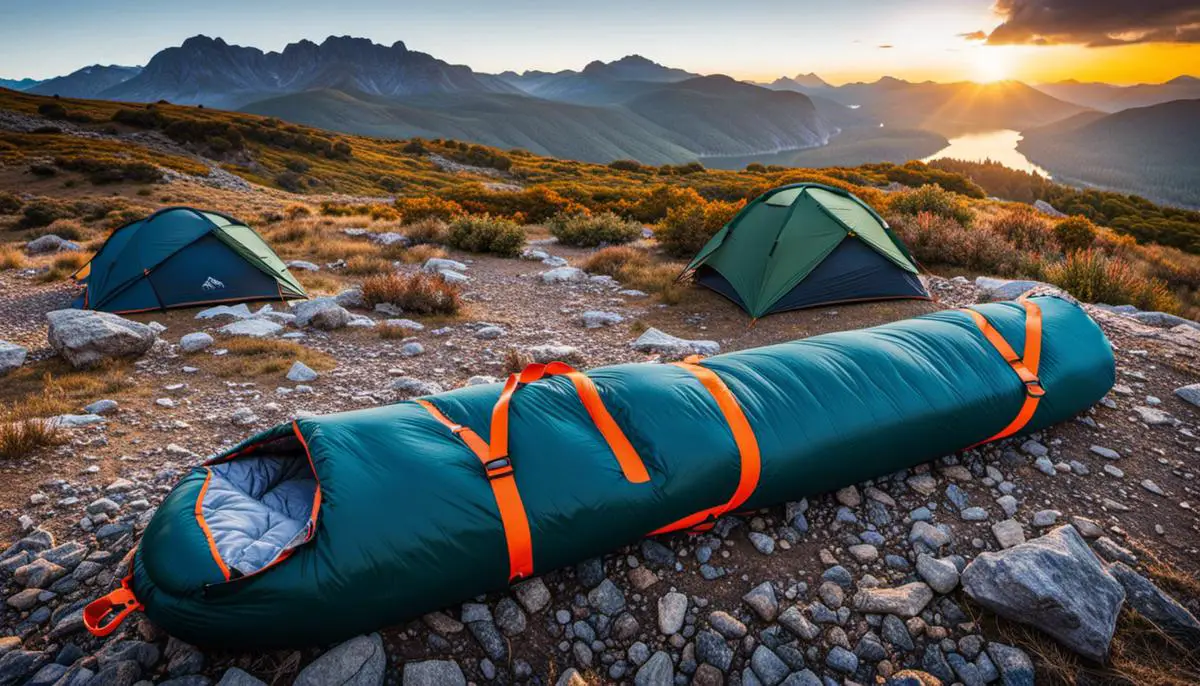
Benefits of Using Zero-Degree Sleeping Bags
Zero-Degree Sleeping Bags: Superior Heat Retentiveness
The standout feature of zero-degree sleeping bags is their exceptional heat retentiveness, making them a go-to option for outdoor expeditions in chillier environments. These sleeping bags have a zero-degree Fahrenheit rating, indicating their ability to insulate you in freezing temperatures. The secret lies in the use of highly insulating materials during their making, thus ensuring warmth and security.
Chillier environments such as Alaska. Here are the Top 5 family campgrounds in Alaska.
Compact and Lightweight: Ease of Transport
Added to their high-level warmth, zero-degree sleeping bags offer the advantage of being portable and lightweight. Despite the added material for insulation, some of these bags come with a low weight which is an important aspect of mobility in outdoor excursions. This feature allows campers, hikers, and other outdoor enthusiasts to carry them along with ease on long treks. Therefore it removes the burden of excessive weight.
Ideal for Diverse Outdoor Activities
The functionality of zero-degree sleeping bags extends over a wide range of outdoor activities, not just restricted to mountain trekking. Whether for a regular camping trip during the chillier months, ice fishing stints, or even survival scenarios, this bag can be the perfect gear. These sleeping bags protect users from hypothermia and other cold-related conditions keeping one warm and safe.
Sturdy Design: A Marker of Durability
In addition to significant heat preservation, zero degree sleeping bags are noted for their robust design. They are constructed to face and weather harsh outdoor conditions. This robust design extends their lifespan, making them a long-term investment for many outdoor adventure enthusiasts.
Comfort: Enhancing Outdoor Sleeping Experience
Comfort does not take a backseat when designing these sleeping bags. Most zero-degree sleeping bags feature a mummy-style design that fits snugly around the body, trapping heat more effectively. Some designs also offer ample space for movement and include pockets for small item storage, making the sleeping experience inside the bag remarkably comfortable and convenient.
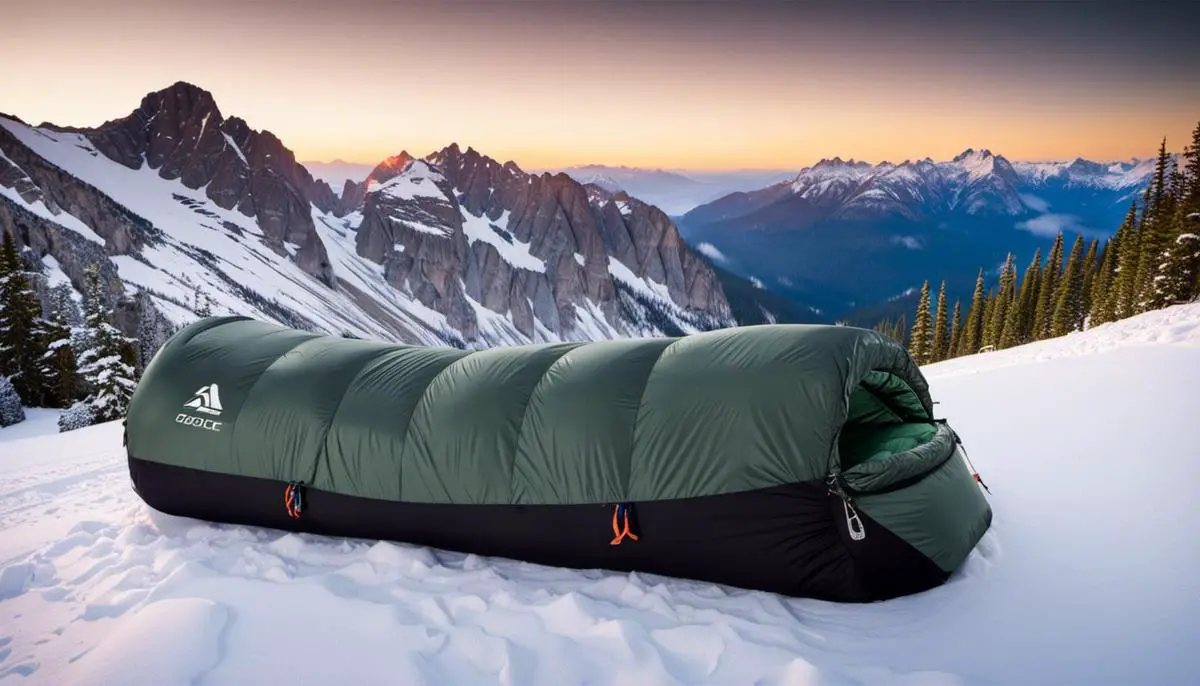
Popular Zero-Degree Sleeping Bags on the Market
Spotlighting the Hyke & Byke Eolus 0 Degree Sleeping Bag
Zeroing in on the best zero-degree sleeping bags in the market, the Hyke & Byke Eolus 0 Degree Sleeping Bag emerges as a popular favorite among consumers, all thanks to its enduring durability and unmatched comfort. Built with an 800-fill power goose-down insulation, this sleeping bag promises optimal warmth even in the harshest, coldest of conditions. Not only does it boast a lightweight design, but it is also generous in space, making it a convenient companion for all your outdoor adventures. A water-resistant shell tags along, ensuring you stay dry. Its warmth and compact design have earned it glowing reviews from customers.
Teton Sports Celsius XXL 0 Degree Sleeping Bag
Another quite popular option is the Teton Sports Celsius XXL 0 Degree Sleeping Bag. This sleeping bag features a soft cotton flannel lining and a taffeta shell, making it as cozy as it is durable. It is a highly-touted choice for its high insulation that can withstand cold conditions. It is spacious, allowing for comfort even with bulky winter clothing. However, this bag should likely be used early in the winter season or late as spring starts to change the weather. With high customer satisfaction ratings, it’s also one of the less expensive options.

North Face Eco Trail 0 Degree Sleeping Bag
The North Face Eco Trail 0 Degree Sleeping Bag is a favorite among outdoor enthusiasts. Known for its extreme temperature resistance, it uses 800 Fill ProDown insulation and features a water-resistant Neovent Air fabric on the hood, foot box, and back for extra protection against frost and condensation. The price is on the high end yet customers seem to agree that for its robust design and durable features, it is well worth the investment.

Coleman North Rim 0 Degree Sleeping Bag
The Coleman North Rim 0 Degree Sleeping Bag is an excellent budget choice. With its quality synthetic insulation and affordable pricing under $100, it’s very popular among beginners and those on tight budgets without compromising on warmth and comfort. Its durable construction contributes to its positive reviews, with many noting its longevity despite regular usage.

Sierra Designs Nitro 0 Degree Sleeping Bag
The Sierra Designs Nitro 0 Degree Sleeping Bag utilizes Dridown fill to provide warmth and softness. It also has a full-length, two-way, anti-snag zipper that makes ventilation and temperature control very easy for users. With ratings lauding its comfort and flexibility, it’s a higher priced option, likely best for people who camp in winter a lot.

Exploring the market, one can find a vast selection of 0 Degree sleeping bags tailored to various needs and budget sizes. When selecting the right sleeping bag, it’s crucial to factor in elements such as weight, pack size, and added features like water-resistant properties, hood shape, and unique zipper designs. These considerations ensure you choose a bag that best suits your camping needs.
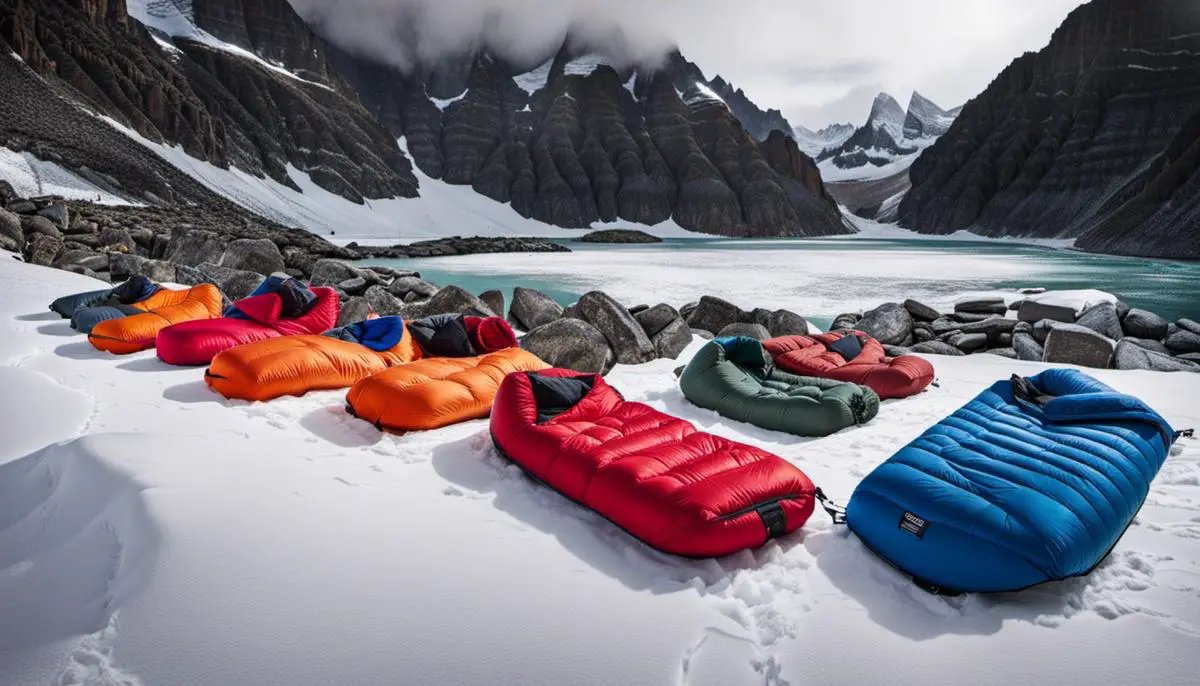
Care and Maintenance for Zero Degree Sleeping Bags
Looking After Your Zero-Degree Sleeping Bag’s Fabric
Moving on to upkeep, the correct care of your zero-degree sleeping bag is paramount, starting with its fabric. Given these sleeping bags are crafted to withstand harsh negative temperatures, they are often made from resilient, top-tier materials. To preserve the insulation’s effectiveness, steer clear of any punctures, tears, or wear and tear on the sleeping bag.
Cleaning Zero-Degree Sleeping Bags
Cleaning a zero-degree sleeping bag should be done mindfully. Because of the sensitive materials often involved in these sleeping bags, it’s recommended to hand wash them using a gentle, specialized cleaner. Avoid using standard household detergents which can damage the materials.
When washing, fully submerge the bag in lukewarm water and gently work the cleaner into the fabric. Then, thoroughly rinse to remove all soap residue. Be careful with the wet, heavy bag, as lifting it incorrectly could potentially damage the construction.
Being prepared for winter camping is critical. Learn our top tips now.
Drying Your Zero-Degree Sleeping Bag
Drying your sleeping bag is an important part of the maintenance process. Keep in mind that down-insulated bags must never be wrung out, as it could damage the delicate feathers. Instead, press the bag to extract any excess water and then let it dry naturally; machine drying is not recommended unless the care tag specifically says it’s safe. And when air-drying, avoid direct sunlight to prevent degradation of the material.
Storing Your Zero-Degree Sleeping Bag
Proper storage is vital to extending the lifespan of your zero-degree sleeping bag. Rather than compressing it in a stuff sack, which could harm the insulation, store it in a breathable storage sack or hang it up in a closet. This allows the insulation to maintain loft and effectiveness.
General Maintenance Tips
In addition to cleaning and storage, there are other general maintenance tips that should be adhered to with zero-degree sleeping bags. After each use, be sure to air out the bag in order to prevent sweat and condensation from seeping into the insulation and causing mildew or odor. Also, use a sleeping bag liner which adds an additional layer of protection to the bag’s inside and can be easily cleaned.
Getting minor repairs done promptly will also help in prolonging the lifespan of your sleeping bag. Identifying and repairing any minor damages such as rips or snags early will prevent them from aggravating over time. Lastly, limiting exposure to extreme conditions, such as keeping the bag away from fires, will help protect the materials of your sleeping bag.
By following this care and maintenance guide for zero-degree sleeping bags, you can ensure that your bag remains dependable during chilly nights and prolong its use for many more outdoor adventures.
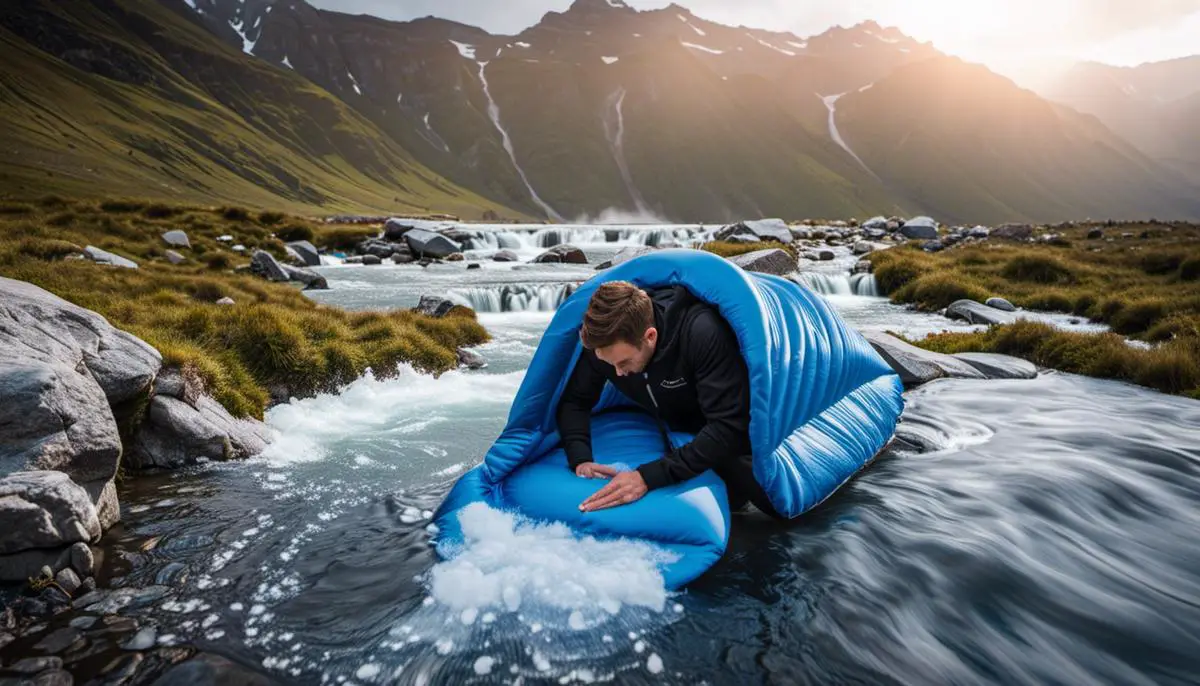
Final Thoughts on Choosing the Right Zero-Degree Sleeping Bag
Knowledge is power, and in the world of outdoor adventures, it can make the difference between a memorable experience and a troublesome one. Now you are enlightened with a better understanding of zero-degree sleeping bags. You understand what they are, their significant features, and their respective benefits. You even have a good starting point about which ones to consider purchasing based on market reviews. And most importantly, you are equipped with key insights on how to care for and maintain them. Use this information to your advantage and ensure your outdoor activities in cold weather are always safe, comfortable, and enjoyable.

